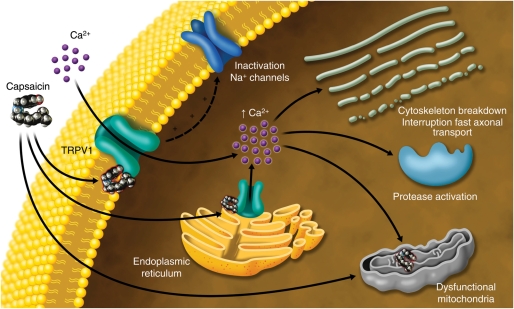Fig 3.
Multiple mechanisms underlie capsaicin-induced defunctionalization. Inactivation of voltage-gated Na+ channels and direct pharmacological desensitization of plasma membrane TRPV1 receptors may contribute to an immediate reduction on neuronal excitability and responsiveness. More persistent effects may be due to the overwhelming of intracellular Ca2+ buffering capacity by extracellular Ca2+ entering through TRPV1 and being released from intracellular stores, with subsequent activation of calcium-dependent proteases and cytoskeleton breakdown. Microtubule depolymerization may interrupt fast axonal transport. At concentrations far in excess of those required to activate TRPV1, capsaicin can also render mitochondria dysfunctional by directly inhibiting electron chain transport. Thus mitochondria are a key convergence point for defunctionalization.

